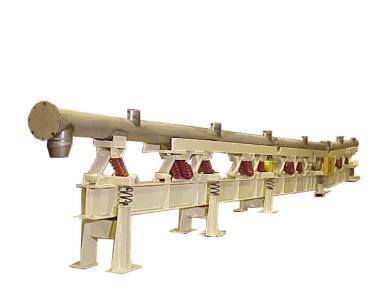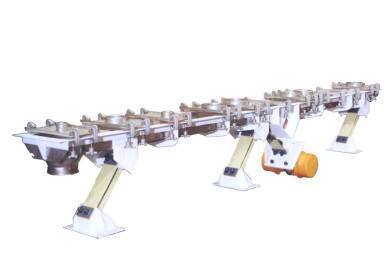Screw conveyors have been around in the process industry for decades. They usually consist of a trough or tube containing a spiral auger that moves material from one end of the conveyor to the other. Augers designed for screw conveyors typically contain a shaft down the center, although shaftless screw conveyor augers are also available. Unless the machine is short in length, hanger bearings are located throughout the trough to help guide and support the auger.
There are many applications for screw conveyor technology. They excel at moving sticky materials such as sludge, food and meat products, and other hard to convey materials. But what if you have a bulk product that is dry, oddly shaped, extremely abrasive, or requires something done to it while it is being transported? In this case, screw conveyors are likely not your best option.

Vibratory conveyors provide an alternative to screw conveyors. Using an unbalanced drive coupled to a trough, vibratory conveyors can efficiently convey materials without the maintenance issues associated with screw conveyors. No moving or drive components come into contact with the material you are conveying. This design advantage eliminates the auger, shaft, and hanger bearings, which are all wear items that require continuous maintenance.
Another advantage of vibratory conveyors is reduced wear characteristics on the pan itself. With a screw conveyor, the material is pushed along the surface of the trough, creating friction and wear. Vibratory conveyors move material by continuously tossing and throwing the product forward, so contact with the trough during conveyance is significantly reduced.

Additional process advantages are also found when utilizing vibratory conveyors over screw conveyors. Processes such as heating, drying, cooling, screening, and more can be accomplished while conveying products in a vibratory conveyor.
Vibratory conveyor machines can be designed as tubes, or square pans, open, or enclosed, and can be split into multiple lanes or divided to send material in different directions. Vibratory conveyors can also be designed to go around corners and can be inclined or declined, allowing unique installation opportunities in existing processes and structures. Lengths, widths, and depths of machine designs are not limited like they are when utilizing screw conveyors.
When considering how to move your bulk materials, consider the advantages of vibratory conveyors over screw conveyors. Reduction in maintenance, elimination of wear parts, and the ability to customize your machine to your application are just a few of the reasons that vibratory conveyors may be better than screw conveyors. These advantages of vibratory conveyors can enhance your bulk material handling process.




